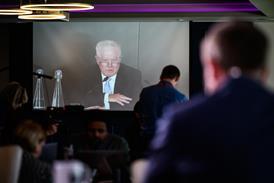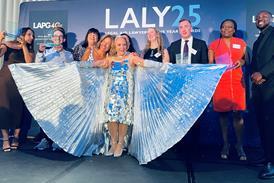Victimisation - Protected disclosure - Employees making protected disclosure - Employment Rights Act 1996
Fecitt and others v NHS Manchester: CA (Civ Div) (Lord Justices Mummery, Elias, Davis): 25 October 2011
The employees (W, F and H) were registered nurses with many years clinical experience. In early 2008, W was concerned about the fact that a colleague working as a general nurse, S, was making what she believed to be false statements to other members of staff about his clinical experience and qualifications.
She had, for example, overheard him telling a student nurse that he had been a charge nurse in accident and emergency for five years, whereas W knew that he had only been qualified for about five years. She expressed her concerns to the first employee, F, who carried out some research and discovered that S was only qualified as a children’s nurse. F raised concerns about S’s lack of his professed qualifications to her line manager. W and H supported F.
It was not disputed that those disclosures were qualifying disclosures within the meaning of section 43A of the Employment Rights Act 1996 (the act) since all three employees reasonably believed that their disclosures tended to show that the health and safety of individuals had been, or was likely to be, endangered, and they were made in good faith to the employer. S acknowledged to the employer that he had exaggerated his qualifications to colleagues, although not to the employer itself. The employer accepted S’s apology and confirmation that his lies would not be repeated. The employees were not satisfied with that response and sought to pursue the matter further.
In April 2008, S lodged a bullying and harassment complaint against F. F was found not to have been guilty of bullying or harassment, although questions were raised about her management style. F subsequently made a formal complaint under the employer’s whistleblowing policy. The employees were subject to certain hostile and unpleasant acts as a result of continuing to pursue the matter. The employer was concerned about the dysfunctional effect that those developments were having on the staff. In May, F had her management functions removed from her. All three employees lodged grievances with the employer, although only that of H was pursued to a hearing.
It was found that H had been subjected to treatment which had resulted in her being isolated and prejudice. It was also considered that management could have done more to prevent that. F and W were subsequently redeployed by the employer and shifts were removed from H. The employees lodged complaints with the employment tribunal, alleging that the employer had breached their rights under section 47B of the act. The tribunal held, inter alia, that any failure by the employer to take appropriate steps to protect the employees from harassment had not been because the employees had made a protected disclosure. Further, it found that neither F nor W had been redeployed because they had made a protected disclosure. The employees appealed to the Employment Appeal Tribunal (EAT). The appeal succeeded on two grounds.
First, the EAT held that employers would be vicariously liable for acts of victimisation by employees directed at fellow employees because they had made protected disclosures, provided that those acts were committed in the course of employment. The EAT, following Cumbria County Council v Carlisle-Morgan [2007] All ER (D) 248 (Jan)(Cumbria), held that that was so, notwithstanding that the employees were not themselves legally liable under the statute for their own victimisation. Since the EAT had not analysed on the facts whether the employees had committed acts of victimisation in the course of their employment, the case was remitted to it to do so.
Second, the EAT held that the tribunal had not identified the appropriate standard of proof for determining whether a protected disclosure had been a reason for the detrimental treatment so as to give rise to liability under section 47B of the act. In order to discharge the burden imposed on it, the EAT found that it was obliged to follow the approach set out in Igen v Wong [2005] All ER (D) 300 (Feb), and held that the employer had to satisfy the tribunal that the adverse treatment afforded to the employees was ‘in no sense whatsoever’ on the grounds that the employees had made a protected disclosure. That matter was also remitted for consideration by the tribunal. The employer appealed.
The principal issues that fell to be determined were whether the EAT had erred in: (i) holding that the employer could in principle be vicariously liable for the acts of victimisation of its employees in circumstances where the employees had committed no legal wrong: and (ii) remitting to the tribunal the question of the employer’s personal liability, apparently on the premise that the tribunal had erred in its approach to causation. In relation to ground (ii), the employer submitted, inter alia, that the reasoning of the tribunal had demonstrated that, even if the EAT was correct in concluding that the employer could discharge the burden of proof only by showing that the making of the protected disclosure had played no part whatsoever in the relevant acts or omissions, that onus had plainly been discharged in the instant case. The appeal would be allowed.
(1) It was established law that an employer could be vicariously liable only for the legal wrongs of its employees. In contrast to the discrimination legislation where individuals might be personally liable for their acts of victimisation taken against those who pursued discrimination claims, there was no provision making it unlawful for workers to victimise whistleblowers. Of course, depending on the nature of the act of victimisation, the employee might be committing other wrongs for which the employer could be vicariously liable (see [32]-[33] of the judgment).
In the instant case, no specific legal wrongs had either been relied upon or established, and in any event the tribunal would not have had jurisdiction to deal with them. The EAT had erred in following the Cumbria case, which had been wrongly decided, and in remitting the issue of vicarious liability to the tribunal (see [33], [35] of the judgment).
(2) Once an employer had satisfied the tribunal that he had acted for a particular reason, that necessarily discharged the burden of showing that the proscribed reason played no part in it. It was only if the tribunal considered that the reason given was false, whether consciously or unconsciously, or that the tribunal was being given something less than the whole story that it was legitimate to infer discrimination in accordance with the Igen principles (see [41] of the judgment).
In the instant case, there was nothing in the tribunal’s decision which was inconsistent with the approach to the standard of proof adumbrated by the EAT. The tribunal’s decision showed that it was satisfied that the reasons given by the employer for acting as it did had been genuine, and had demonstrated that the fact that the employees had made protected disclosures had not influenced those decisions (see [40],[43] of the judgment). The finding of the tribunal that there had been no breach of section 47B of the act would be restored (see [63] of the judgment).
Per curiam: ‘In my judgment, the better view is that section 47F will be infringed if the protected disclosure materially influences (in the sense of being more than a trivial influence) the employer’s treatment of the whistle-blower. If parliament had wanted the test for the standard of proof in section 47 to be the same as for unfair dismissal, it could have used precisely the same language, but it did not do so.’
Decision of Employment Appeal Tribunal [2010] All ER (D) 320 (Nov) reversed.
Thomas Linden QC and James Boyd (instructed by Hill Dickinson) for the employer; Daphne Romney QC and Yvette Bude (instructed by Gorvins Solicitors) for the employees; Robin Allen QC (instructed by Public Concern at Work) for Public Concern at Work (the intervenor).



























No comments yet